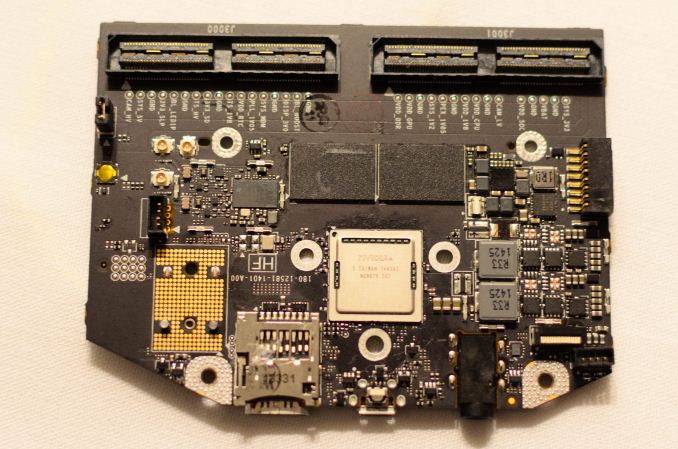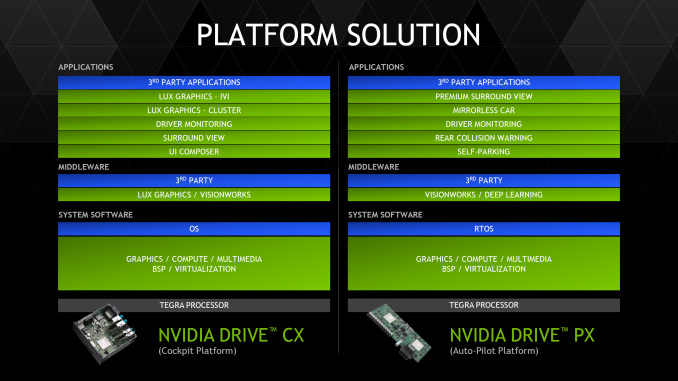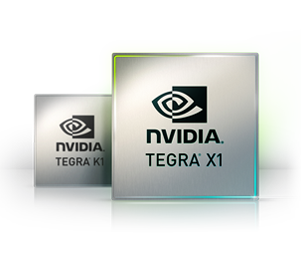NVIDIA Tegra X1 Preview & Architecture Analysis
by Joshua Ho & Ryan Smith on January 5, 2015 1:00 AM EST- Posted in
- SoCs
- Arm
- Project Denver
- Mobile
- 20nm
- GPUs
- Tablets
- NVIDIA
- Cortex A57
- Tegra X1
Final Words
With the Tegra X1, there have been a great deal of changes when compared to Tegra K1. We see a move from Cortex A15 to A57 on the main cluster, and a move from a single low power Cortex A15 to four Cortex A53s which is a significant departure from previous Tegra SoCs. However, the CPU design remains distinct from what we see in SoCs like the Exynos 5433, as NVIDIA uses a custom CPU interconnect and cluster migration instead of ARM’s CCI-400 and global task scheduling. Outside of these CPU changes, NVIDIA has done a great deal of work on the uncore, with a much faster ISP and support for new codecs at high resolution and frame rate, along with an improved memory interface and improved display output.
Outside of CPU, the GPU is a massive improvement with the move to Maxwell. The addition of double-speed FP16 support for the Tegra X1 helps to improve performance and power efficiency in applications that will utilize FP16, and in general the mobile-first focus on the architecture makes for a 2x improvement in performance per watt. While Tegra K1 set a new bar for mobile graphics for other SoC designers to target, Tegra X1 manages to raise the bar again in a big way. Given the standards support of Tegra X1, it wouldn’t be a far leap to see more extensive porting of games to a version of SHIELD Tablet with Tegra X1.
NVIDIA has also made automotive applications a huge focus in Tegra X1 in the form of DRIVE CX, a cockpit computing platform, and DRIVE PX, an autopilot platform. Given the level of integration and compute present in both DRIVE CX and PX, there seems to be a significant amount of value in NVIDIA’s solutions. However, it remains to be seen whether OEMs will widely adopt these solutions as car manufacturers can take multiple years to implement a new SoC. Compared to the 3-4 month adoption rate of an SoC in a phone or tablet, it's hard to pass any judgment on whether or not NVIDIA's automotive endeavors will be a success.
Overall, Tegra X1 represents a solid improvement over Tegra K1, and now that NVIDIA has shifted their GPU architectures to be targeted at mobile first, we’re seeing the benefits that come with such a strategy. It seems obvious that this would be a great SoC to put in a gaming tablet and a variety of other mobile devices, but it remains to be seen whether NVIDIA can get the design wins necessary to make this happen. Given that all of the high-end SoCs in the Android space will be shipping with A57 and A53 CPUs, the high-end SoC space will see significant competition once again.













194 Comments
View All Comments
kron123456789 - Monday, January 5, 2015 - link
If he still belives in android gaming, Nvidia will announce the new Shield Portable at CES or MWC.techconc - Monday, January 5, 2015 - link
Casual games will always be more popular than the more hard core type of games. That said, there are plenty of mobile games that push the system hard. Try something like World of Tanks Blitz on your device. On an iPad Air, it's a smooth 60 fps. On a lark, I tried it on a Nexus 7 once it finally came out for Android. A was an unplayable 15 fps (max). The graphics aren't up to the PC level either. The point being, there is plenty of need for more powerful mobile gaming systems and the average "budget" device just isn't up to par for such needs.Yojimbo - Monday, January 5, 2015 - link
I don't think they are necessarily abandoning the gaming market. They could be giving a presentation for their investors to be excited about. Mobile gaming could still be a long-term plan, but they don't see significant growth there this next cycle such that it will give them significant profits. But these automotive initiatives are something new they can try to get people excited about.ramabg - Monday, January 5, 2015 - link
Intel should start licensing Nvidia GPU instead of using Its slow in house GPUab303 - Monday, January 5, 2015 - link
How fair is the power comparison? iPad air2 has a complex intrusive rework (from picture) while on x1 platform profiler dumped power is used. The rework itself could contribute to power overhead on iPad air2.Also a8x is tile based rendering (heavy on chip memory access) while X1 is direct rendering and requires heavy ddr access. So gpu core power comparison without including ddr can be very misleading.
lucam - Friday, January 9, 2015 - link
Indeed it's very good point and you re the only one have noticed that.yhselp - Tuesday, January 6, 2015 - link
Just to confirm - they're actually running system memory at 3200 MHz, correct? The quoted 25.6 GB/s memory bandwidth does not factor in color compression?Rock1m1 - Tuesday, January 6, 2015 - link
I hope the X1 ends up in the next Shield tablet. If Nvidia wants to really impress however - Shield Portable 2.Johnflo - Wednesday, January 7, 2015 - link
it could be used on Nvidia Drive Car Computers. Read at http://www.mobileinhand.com/tegra-x1-chip-nvidia-s...watzupken - Wednesday, January 7, 2015 - link
To be honest, K1 was pretty impressive and so is the X1. It's good to see Nvidia pushing the graphic limit on the Andriod camp. However, they are usually let down by the higher power consumption, which makes them less suited for mobile phone usage. Looking forward to seeing one at least in a Shield tablet, or possibly a good Android box.